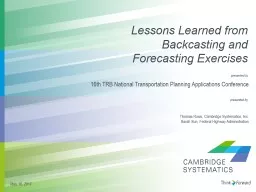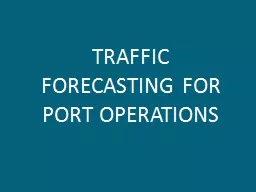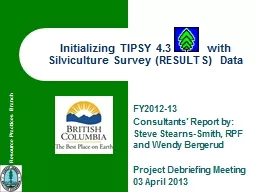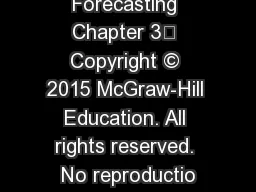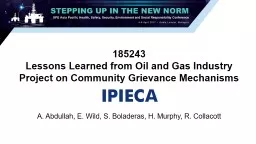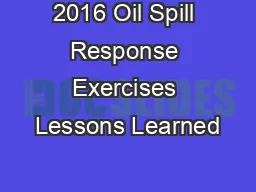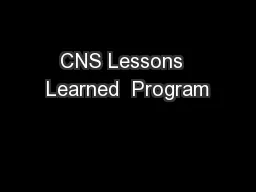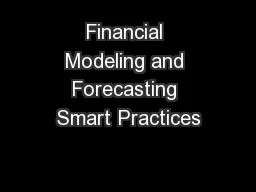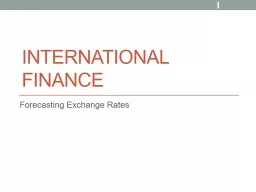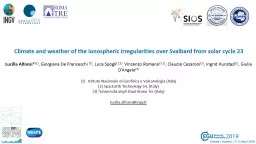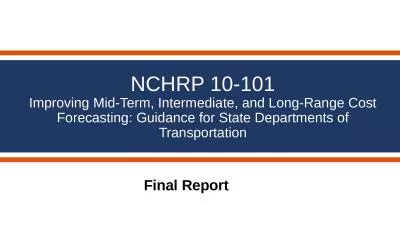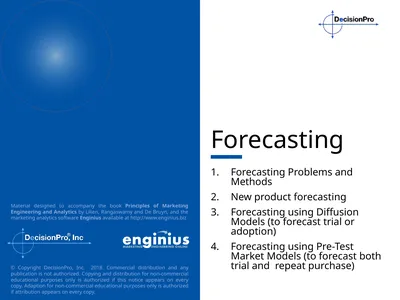PPT-Lessons Learned from Backcasting and Forecasting Exercises
Author : jane-oiler | Published Date : 2019-11-07
Lessons Learned from Backcasting and Forecasting Exercises 16th TRB National Transportation Planning Applications Conference May 16 2017 Thomas Rossi Cambridge Systematics
Presentation Embed Code
Download Presentation
Download Presentation The PPT/PDF document "Lessons Learned from Backcasting and For..." is the property of its rightful owner. Permission is granted to download and print the materials on this website for personal, non-commercial use only, and to display it on your personal computer provided you do not modify the materials and that you retain all copyright notices contained in the materials. By downloading content from our website, you accept the terms of this agreement.
Lessons Learned from Backcasting and Forecasting Exercises: Transcript
Lessons Learned from Backcasting and Forecasting Exercises 16th TRB National Transportation Planning Applications Conference May 16 2017 Thomas Rossi Cambridge Systematics Inc Sarah Sun Federal Highway Administration. “Those who cannot remember the past are condemned to repeat it.” George Santayana. Agenda. Importance of lessons learned. Important lessons I Learned. What are your lessons learned?. Importance of Lessons Learned. TRAFFIC FORECASTING. The essence of port traffic forecasting is to attempt to forecast (predict): . (a) What kinds and tonnages of commodities will move through the port?. (b) How will these commodities be packaged and transported as maritime cargo?. Ann Sambrook. Education Financial Services EFS. . . A – Z has ALL documents from . Consultants’ Report by:. Steve Stearns-Smith, RPF and Wendy . Bergerud. Project Debriefing Meeting. 03 April 2013. Initializing TIPSY 4.3 with Silviculture Survey (RESULTS) Data . . Backcasting. Marketing service management. Lecture 1 = market demand and forecasting.. Marketing service management. What are we going to look at today. Aim. To review the role of market demand and forecasting.. Market demand and forecasting. You should be able to:. LO 3.1 List features common to all forecasts. LO 3.2 Explain why forecasts are generally wrong. LO 3.3 List elements of a good forecast. LO 3.4 Outline the steps in the forecasting process. A. Abdullah, E. Wild, S. Boladeras, H. Murphy, R. Collacott. What is IPIECA?. Slide . 2. 185243 • Community Grievance Mechanisms Lessons Learned • Azrina Abdullah. IPIECA helps the oil and gas industry improve its environmental and social performance by:. May 15, 2017. Alaska Department of Environmental Conservation. Division of Spill Prevention and Response. ADEC is sharing the top lessons learned from . oil. . spill response . exercises to encourage continual improvement in oil spill response. Brian Andrews. . Feedback and Improvement Manager. Consolidated Nuclear Security, LLC . Brian.Andrews@cns.doe.gov. Amanda Crumby. 10/22/2015. 1. Lessons Learned Team . FI&S . . Sharon Chamblee. Presented by Christopher J. Swanson. Government Finance Research Group. www.MuniCast.com. 1. Financial Modeling & Forecasting Smart Practices. www.MuniCast.com. 2. Smart Practices. Annual Forecasting Model – Key Elements. 1. Why Firms Forecast XRs. Hedging decisions. Hedging payables and receivables. Short-term financing decisions. Which currency to borrow in. Low rate, weakening currency. 2. Why Firms Forecast XRs. Short-term investment decisions. . Cesaroni C.. 1. , . Spogli L.. 1,2. , . Aragon. -Angel A.. 3. , Fiocca M.. 4. , . Dear. V.. 5. , De Franceschi G.. 1. , Romano V.. 1,2. 1. Istituto . Nazionale di Geofisica e Vulcanologia, . Italy. Transportation. Final Report. NCHRP 10-101: Research Team . Jorge A. Rueda . Principal Investigator Auburn University - HRC. 2. Cliff Schexnayder . Co-Principal Investigator Arizona State University. Forecasting Forecasting Problems and Methods New product forecasting Forecasting using Diffusion Models (to forecast trial or adoption) Forecasting using Pre-Test Market Models (to forecast both trial and repeat purchase) Managerial Issues
Download Document
Here is the link to download the presentation.
"Lessons Learned from Backcasting and Forecasting Exercises"The content belongs to its owner. You may download and print it for personal use, without modification, and keep all copyright notices. By downloading, you agree to these terms.
Related Documents

